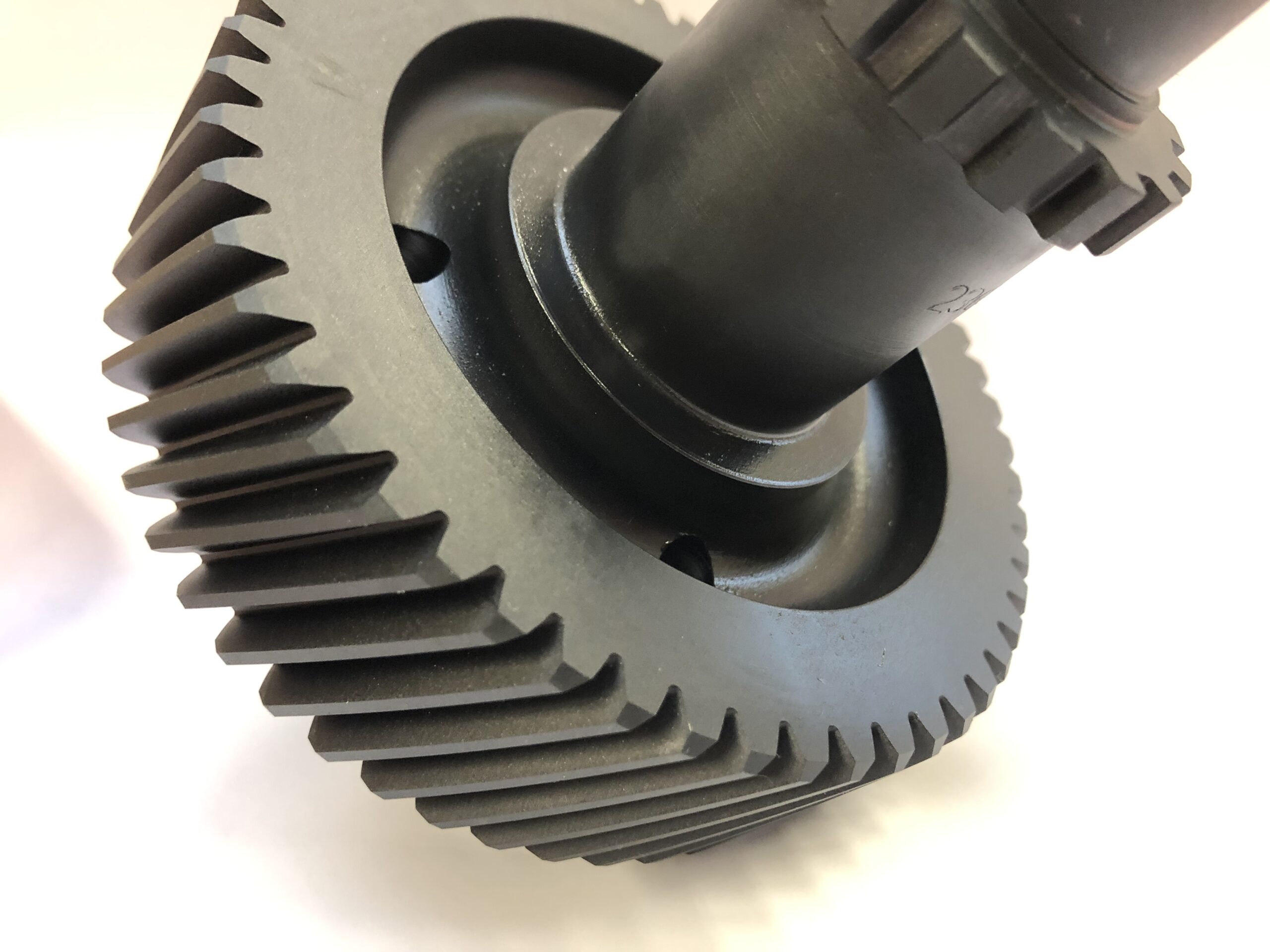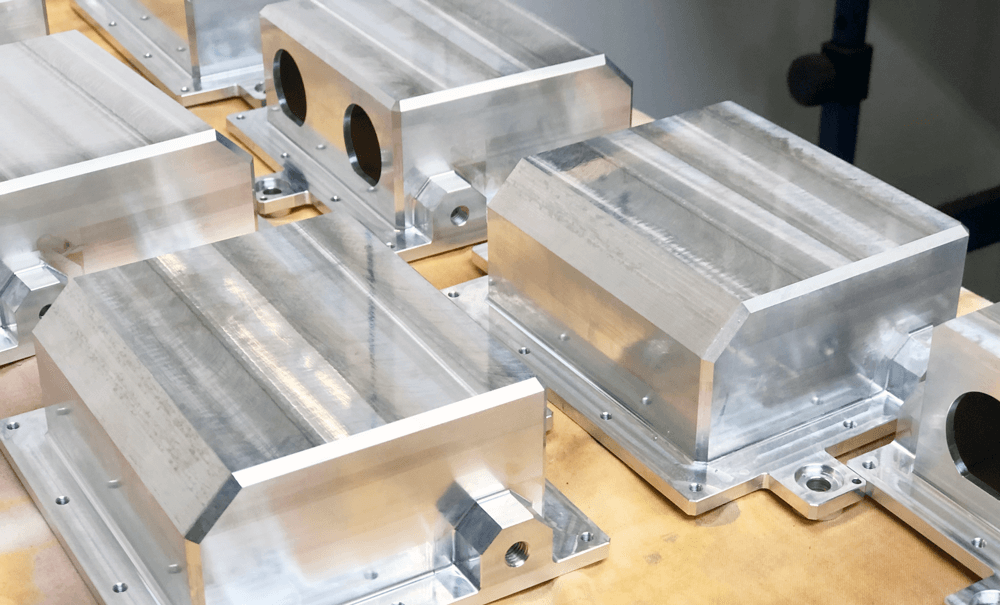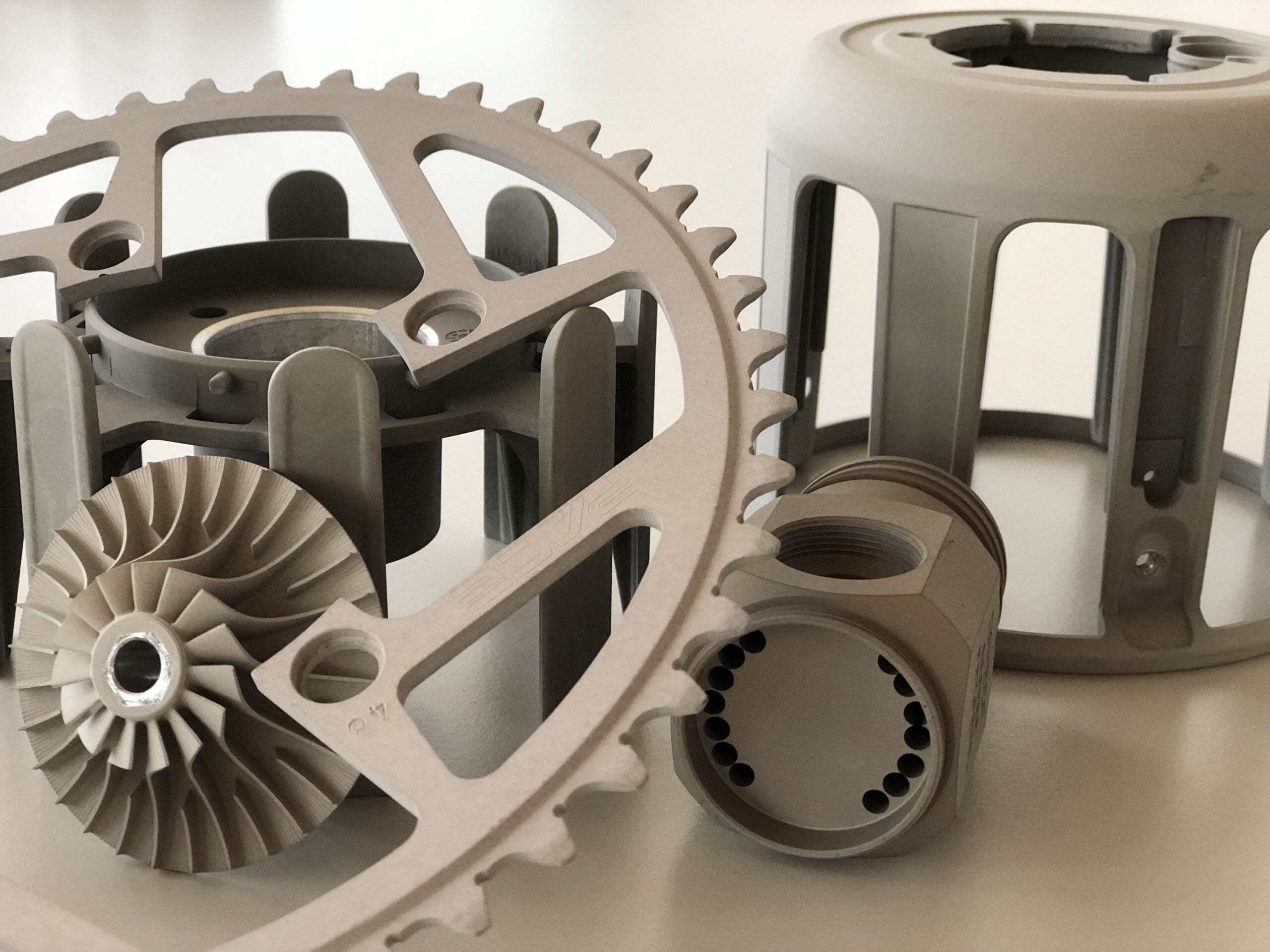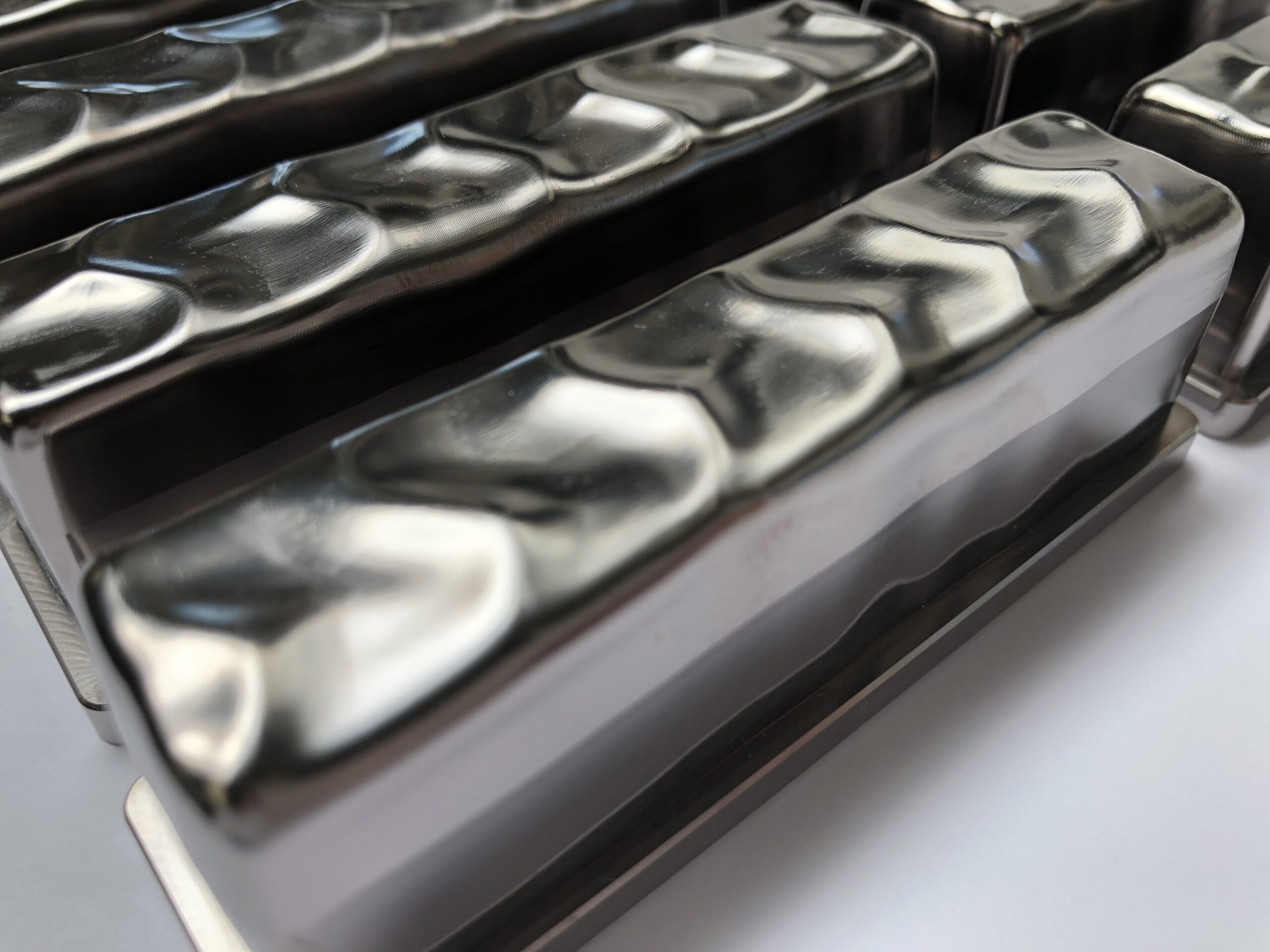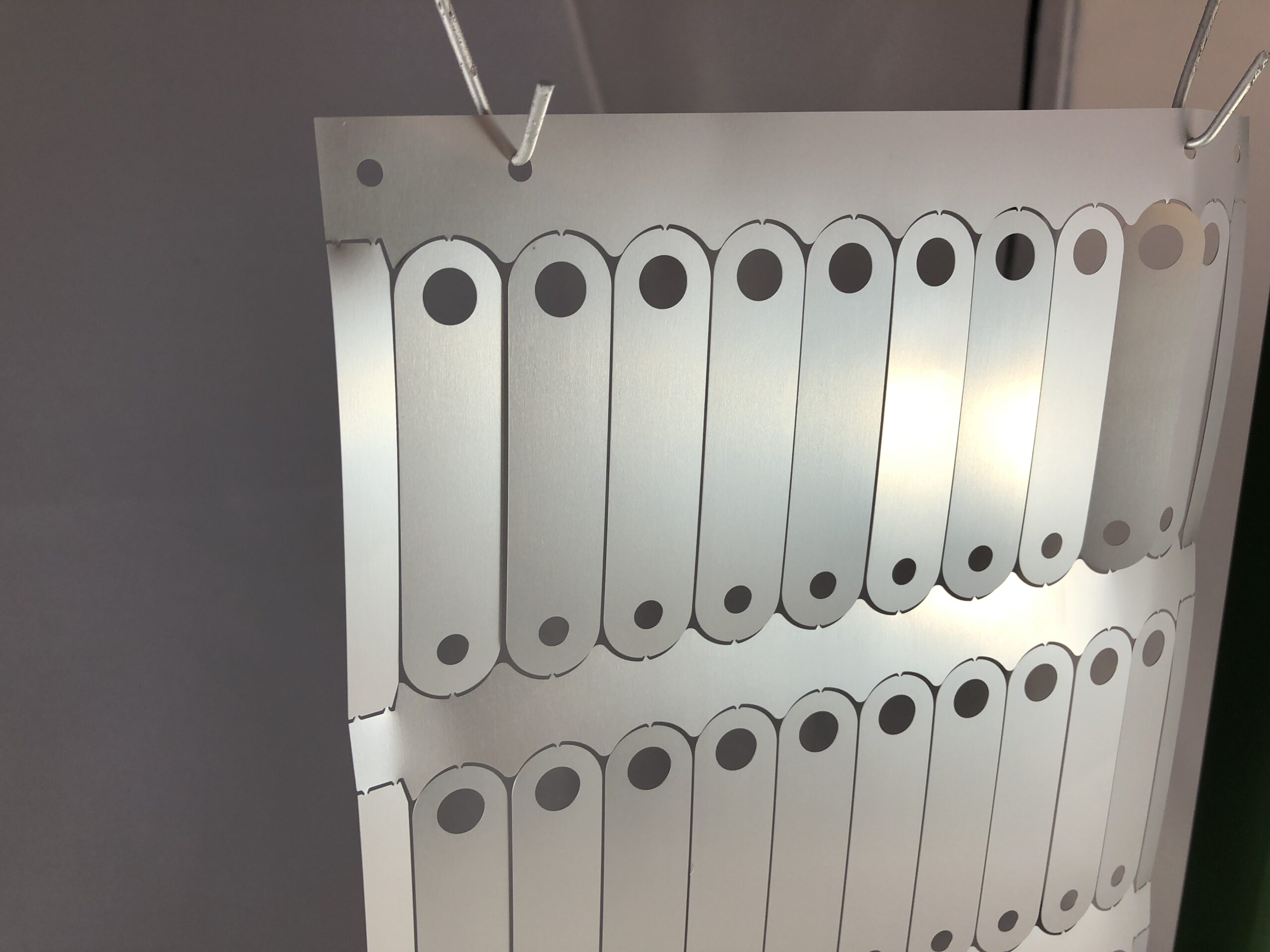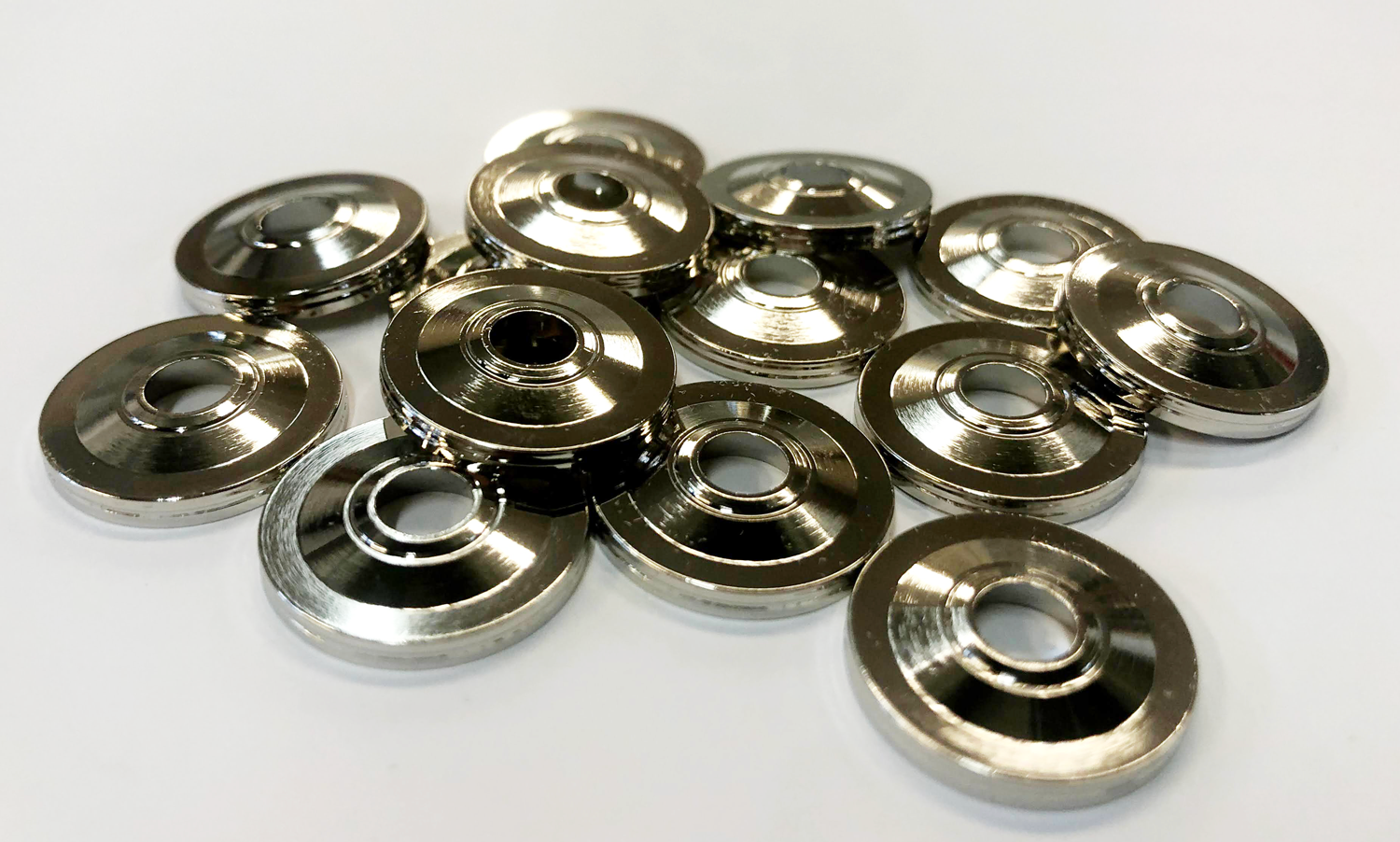
Surface properties
Surface treatment with tin plating gives your items the following properties:
- Durable
- Friction
- Hardness
Nickel
Nickel plating is a type of coating of substrates imposed a coating whose main components are nickel. The layer thickness could in principle be from a few microns up to 1 mm.
Electroplating with Sur-Tech
Nickel coatings can be plated with different values of hardness, even with low stress values by plating with different types nickel baths. . Electrolytic nickel plating is particularly suitable for repair of worn machine components or as effective corrosion protection (RENONIC). This form of nickel plating is also used for electroforming.
The electrolytic nickel plating is performed by electroplating and can also be used as a undercoating for gold plating. Coatings with electroplated nickel can be manufactured so it has a leveling effect on the subject. Thus, there is obtained completely smooth and glossy surface.
The strength of nickel plating of various materials
Nickel plating can be used in many different industries due to the finished products high wear resistance and corrosion protection. Nickel plating has thus, in certain contexts, replaced hard chrome plating.
Sur-Tech – Professional coating
Sur-Tech has many years of experience with nickel plating and surface treatment in general. We can therefore be helpful in finding exactly the right process and protection your products need. We have the necessary professional expertise required.
The process is used on steel and castings to prevent adhesive wear when running in e.g. gearboxes, mechanical parts in engines, bearings etc. Manganese phosphating is best for steel with lower than 3% chromium content.
Surface treatment with manganese phosphating is produced by a dipping process in a vessel and the layer thickness varies from approx. 1.5 to 8 μm with a basis weight of 7-30 g/m2. The color varies from dark gray to black depending on the alloy composition of the base material. The coating meets the requirements of DIN EN 12476-Fe/Mnph g f.

